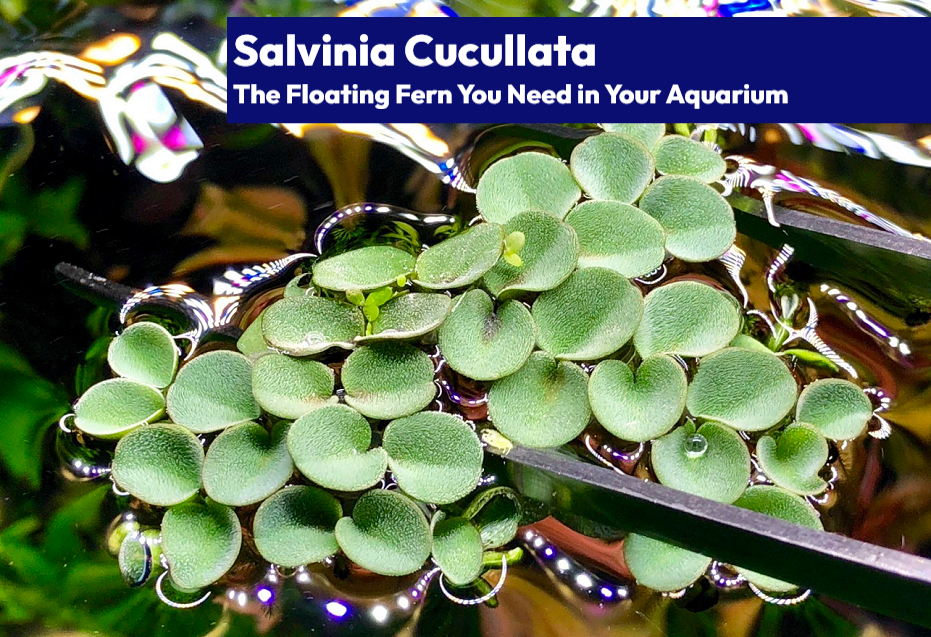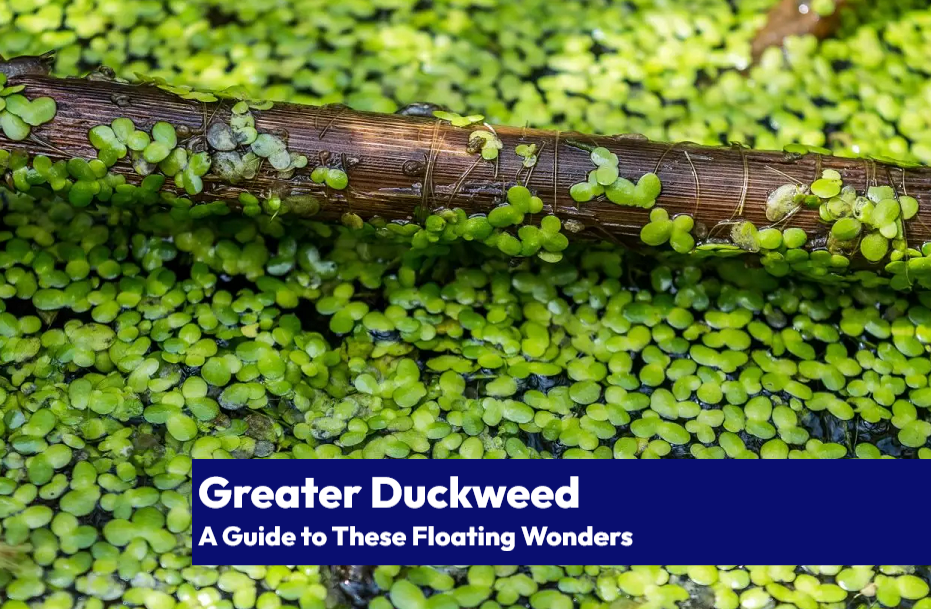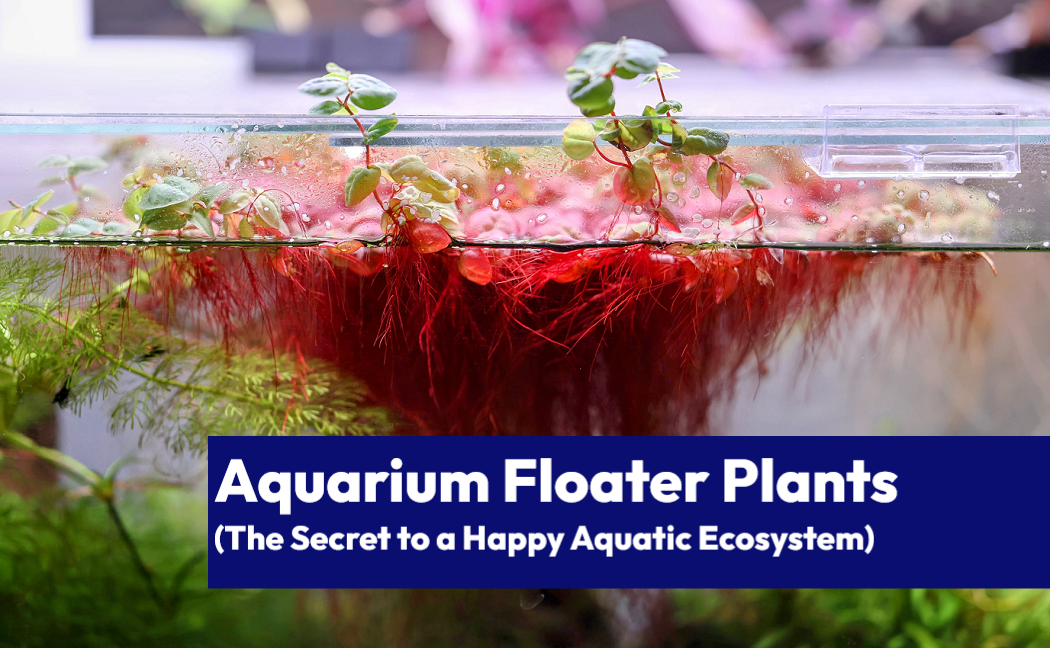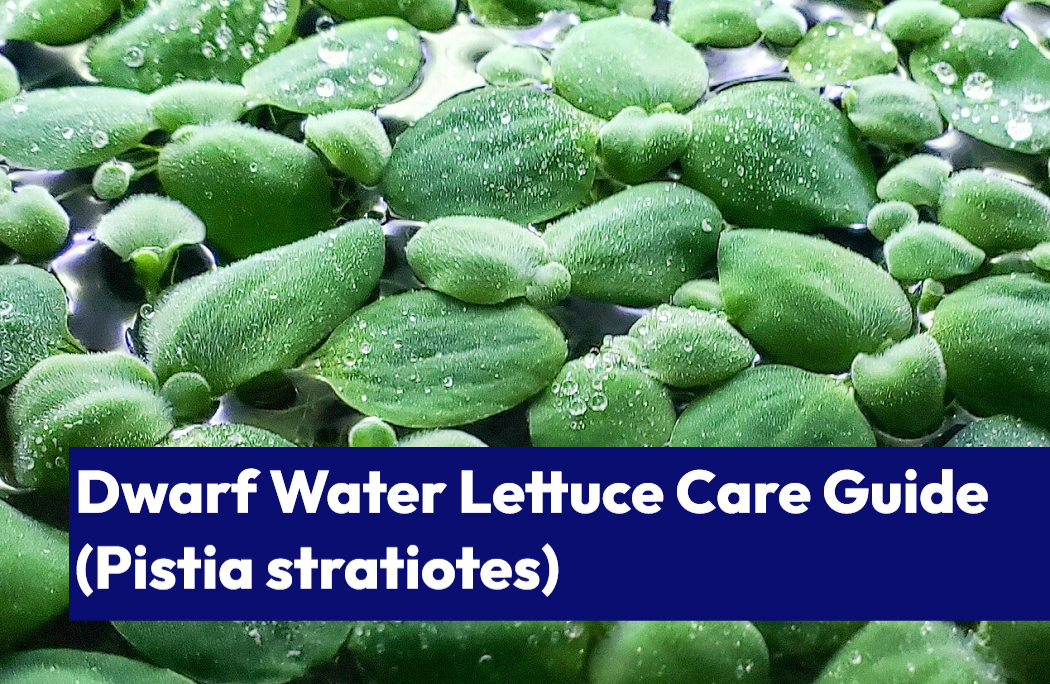Red Root Floaters, also known as Phyllanthus Fluitans, are a unique and highly sought-after freshwater floating fern plant in the aquarium world. With their deep red roots and easy care, these floaters are a must-have for low-tech aquariums and paludariums with gentle water flow.
Red Root Floaters are a floating plant from the Americas tropics that are sure to make your aquarium stand out. With round leaves that sprout alternately on a short stem and tufts of short red roots, these plants are both functional and decorative. Keep reading to learn all about these amazing plants and how to care for them.
| Care Data | Description |
|---|---|
| Light | Medium to High |
| Temperature Tolerance | 18 to 30°C (64-86°F) |
| Optimum Temperature | 24 to 28°C (75-82°F) |
| Carbonate Hardness | 0 to 14°dKH |
| pH Value | 5 to 8 |
| Carbon Dioxide (CO2) | 0 to 40 mg/l |
| Nitrate (NO3-) | 10 to 50 mg/l |
| Phosphate (PO43-) | 0.1 to 3 mg/l |
| Potassium (K+) | 5 to 30 mg/l |
| Iron (Fe) | 0.01 to 0.5 mg/l |
| Propagation | Fragmentation, Cuttings, Splitting, cutting off daughter plants |
| Aquarium Suitability | Yes |
| Usage | Water surface |
| Difficulty | Medium |
| Growth | Fast |
Appearance and Color
The Red Root Floater has a thin stem with tufts of red roots and round, water-repellent floating leaves that are heart-shaped at the base. The leaves hide the stem completely and often have a convex center, while the leaf margin is even with the waterline. If conditions are favorable, tiny white flowers with six petals will appear in the leaf axils.

The stems of the red root floater are 1 to 1.5 mm in diameter, ranging up to 130 mm long, with clusters of adventitious roots emerging from the nodes. The foliage leaves are distichously arranged, range from 9 to 17 mm long, and are water-repellant with a papillate surface. The leaves vary in color from light blue-green to green, and the roots can be brown or pink.
What Makes Red Root Floaters So Special?
These floaters have light green leaves that turn deep red when kept under high light, making them stand out from other green floaters. The roots are what make Red Root Floaters truly special, as they are a deep red color that is both attractive and eye-catching. The leaves are a bit larger than those of green Salvinia floaters and can sometimes be misidentified as immature Water Lettuce.

Easy to Grow and Maintain
Not only are Red Root Floaters beautiful, they are also incredibly easy to grow and care for. They do not require any aquarium substrate, and simply placing them on the water’s surface is enough to get them started. These floaters can quickly multiply under the right conditions and can cover the entire surface of your tank.
Water Parameters
Red Root Floaters do best with a water pH between 6.0 – 7.0, and a temperature range of 24 to 28°C (75-82°F). They love nutrient-rich water and can thrive in low to high light conditions for about 6-8 hours a day.

Remember that Red Root Floaters prefer a low water flow, so keep the water movement to a minimum. If water splashes too often on top of the plant, it can cause it to rot.
A Great Addition to Your Tank
Red Root Floaters offer oxygenation and denitrification, making them a great addition to aquariums with low water flow. CO2 injection is not necessary for these floaters, and they can make even the most reclusive of livestock feel comfortable enough to come out and explore.
Fun Fact: Red Root Floaters can shade areas of your aquarium, making it easier for shy critters to come out and explore. They are perfect for tank mates like shrimp, fry, and any other amphipoda.
Leaf Color: Dependent on Light Intensity
The color of the leaves depends on the light intensity, with more intensive light resulting in deeper brown-red hues. This plant does well in both hard water when the light is intensive and in softer water when the light is weaker. To ensure healthy growth, the Red Root Floater needs ample macro- and micronutrients, like all other floating plants.

Where Do Red Root Floaters Come From?
Native to the Amazon Basin, red root floaters are found in countries such as Peru, Ecuador, Brazil, and northern Argentina.
Propagation: Easy Peasy!
Propagating the Red Root Floater is easy, just like in the Salvinia species. The plants branch out readily and the floating population divides easily into parts as the stems are quite fragile.
If they propagate too quickly, simply pick up and discard the excess plants. However, be aware that a large number of floaters can cause oxygen levels in the tank to drop by impeding surface gaseous exchange. In this case, you can use floating corrals to limit their spread.
Why You Need Red Root Floaters
Not only do Red Root Floaters absorb ammonia and nitrogenous waste compounds, but they also provide a home for micro-organisms and a cover for shy fish. They’re a great option for aquariums that don’t have the conditions to grow submerged plants, and they’re closer to light sources, allowing them to uptake carbon dioxide from the air. This means they’re not limited by the gas exchange limitations of underwater growth.

Key Success Factors
To ensure the success of your Red Root Floaters, keep in mind these key factors:
- Minimal light levels are necessary, but higher light levels will result in faster propagation rates
- Low nitrate/nitrogen levels in the water column will turn the leaves redder
- Gentle currents are preferred, as overly turbulent flow can be damaging to the plant
- Dosing nutrient liquid fertilizer is not necessary, but it can greatly accelerate propagation rates
- Be aware that large numbers of floaters can block light from reaching other aquatic plants in the tank
Flowers and Seeds
The red root floater produces small, white or greenish-white flowers with three sepals and three petals. The staminate flowers have six sessile glands and three stamens, while the pistillate flowers have a circular disc and a superior ovary with six styles. The fruit is a capsule with six seeds that resemble orange segments.

Growing in North America
Phyllanthus fluitans has been found growing wild in North America north of Mexico, and it is a potential invasive species that can block light to submersed plants and potentially cause harm to local aquatic ecosystems. However, it is still sold as a decoration or addition in aquariums due to its red roots and leaves.
Taxonomy
Phyllanthus Fluitans is a species of freshwater floating fern plant that belongs to the genus Phyllanthus in the family Phyllanthaceae. The genus Phyllanthus is a large group of flowering plants that contains over 1,000 species and is widely distributed in tropical and subtropical regions around the world. Phyllanthus Fluitans is native to South America, where it is found in stagnant water habitats such as canals and rivers.
This species is the only free-floating aquatic species in the genus, and is known for its red roots and light green foliage leaves that turn red under high light conditions. The taxonomy of Phyllanthus Fluitans has been well established through scientific study, and it is widely recognized as a unique species within the genus Phyllanthus.
| Taxonomy | Data |
|---|---|
| Kingdom | Plantae |
| Clade | Tracheophytes |
| Clade | Angiosperms |
| Clade | Eudicots |
| Clade | Rosids |
| Order | Malpighiales |
| Family | Phyllanthaceae |
| Genus | Phyllanthus |
| Species | P. fluitans |

Tim Priest, a renowned aquarium expert with over 15 years of experience in aquatic gardening and fish education, is dedicated to helping enthusiasts create stunning and thriving aquatic environments. As the founder of LearnTheAquarium.com, Tim shares his wealth of knowledge, passion, and expertise through engaging articles, educational resources, and personalized advice.
Discover the secrets to creating captivating underwater landscapes and maintaining healthy aquatic ecosystems. Join Tim on an exciting journey and let your aquarium adventure begin!





